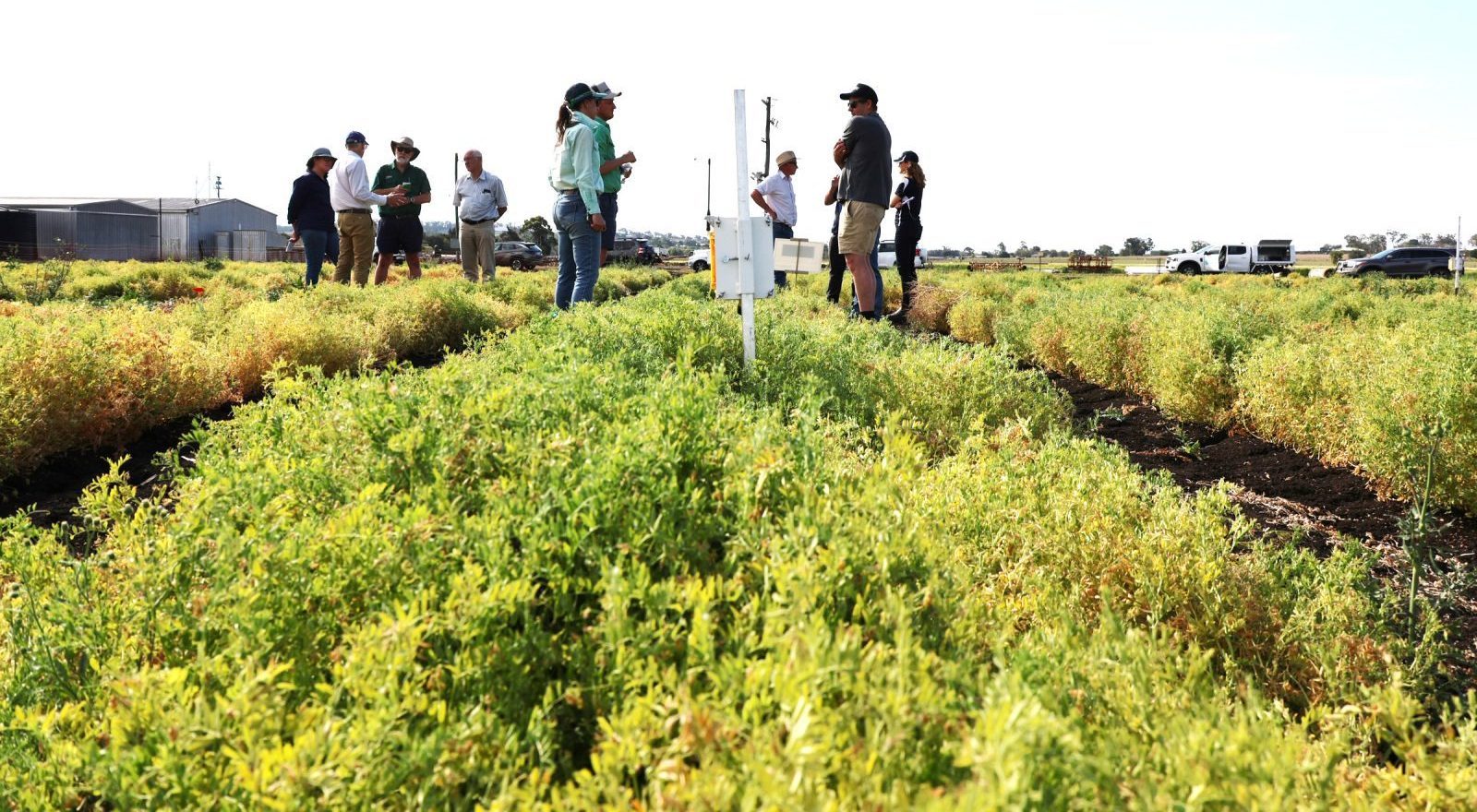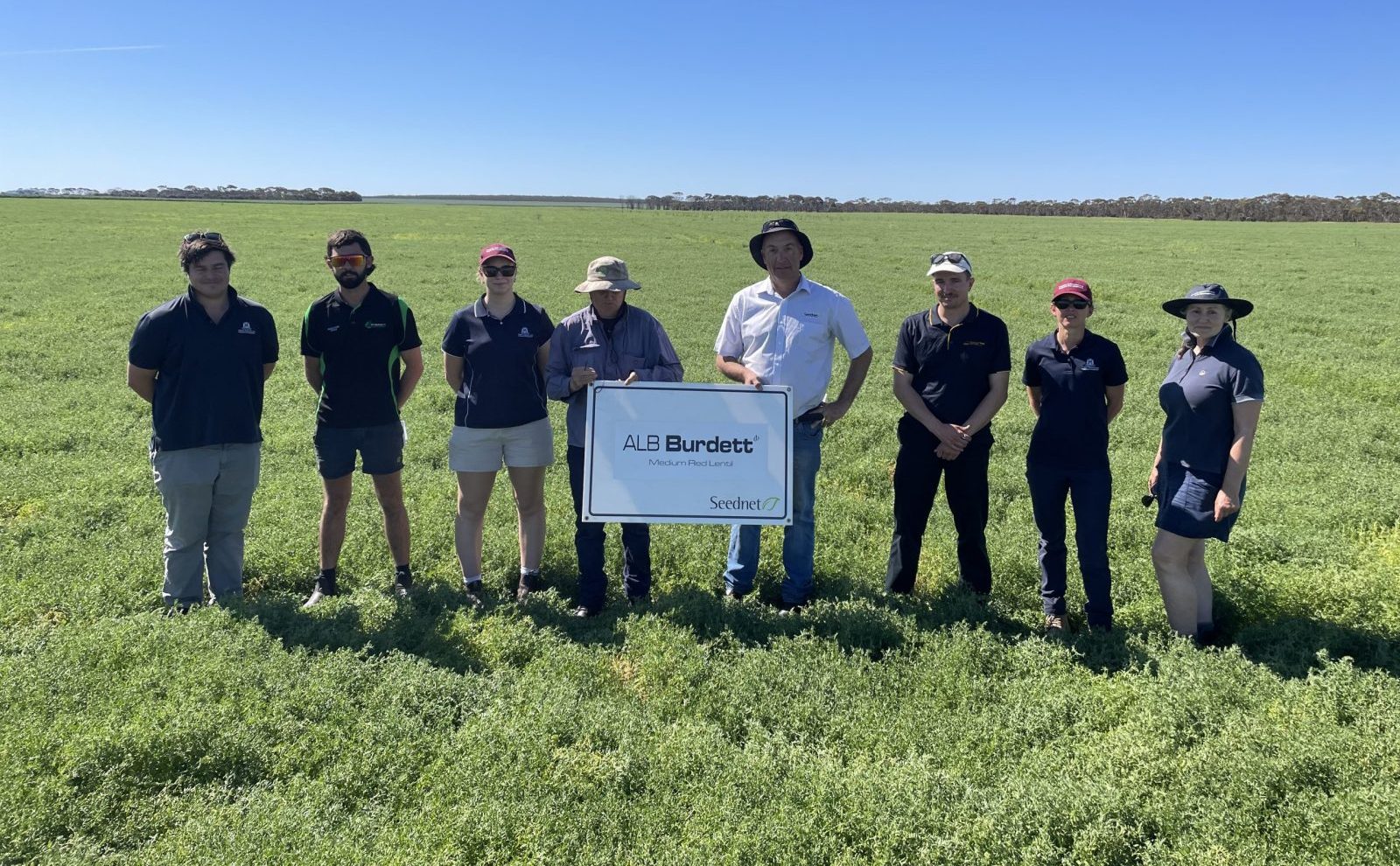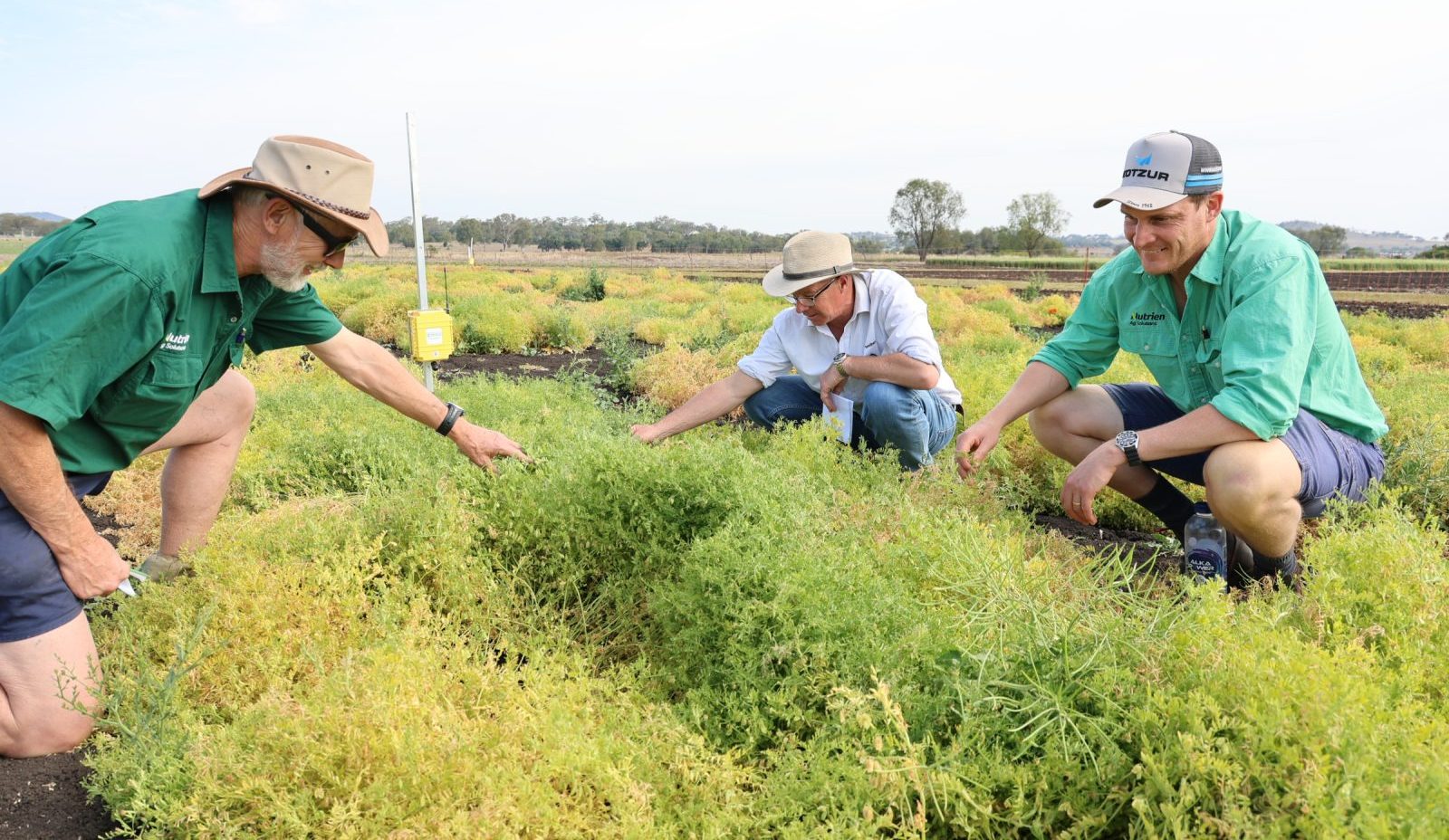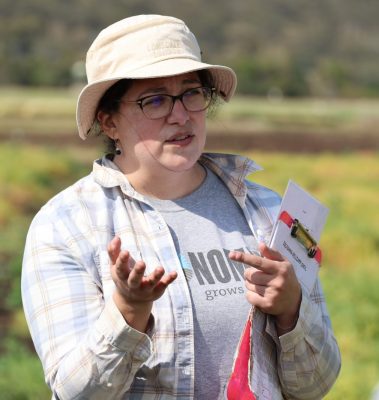
CSIRO’s Frost and Heat Management Analytics project includes a trial site at Wellcamp, west of Toowoomba, where lentils are one of the crops grown.
LENTILS are working their way into an increasing number of grower rotations, and over a growing footprint, that has the crop on track to break its production record from its largest ever planting of 1.14 million hectares.
South Australia and Victoria grow the vast majority of Australia’s lentils, and ABARES estimates both states have planted record areas this year, as has New South Wales.
In Western Australia, where the new ALB Burdett is available to slot into the planting window between canola and cereals, area is rebuilding, and the little pulse is also being grown in Queensland.
2020-21 ha
2020-21 tns
2025-26 ha
2025-26 tns
Qld
200
200
1,100
1,200
NSW
12,000
11,200
75,000
90,000
Vic
261,000
457,000
530,000
750,000
SA
219,000
380,000
515,000
845,000
WA
8,000
5,500
15,000
21,000
TOTAL
500,200
853,900
1,136,100
1,707,200
Table 1: A comparison of Australian lentil area and production in 2020-21 and 2025-26 shows the growth of the crop in all states. Source: ABARES
Renewed interest in WA
WA’s first region-specific lentil variety, ALB Burdett, looks set to fill the planting gap between canola and cereals as a commercially viable pulse option for growers in some districts.
It was identified by WA Department of Primary Industries and Resources Development’s Esperance-based principal research scientist Mark Seymour as yielding well when planted early in trials over several years at Mount Burdett, in the Wittenoom Hills district north-east of Esperance.
ALB Burdett was released at a WA DPIRD field walk last month on the very same farm to honour Mount Burdett’s late owner Chris Reichstein, who died of cancer in 2021.
“For quite some time, we’d done pulse, canola, and wheat trials on the farm, and Chris was always a good host,” Mr Seymour said.
“We bulked up what became Burdett on [what was] Chris’ farm, and we were keen to name it after him.”
In 2019, Mr Reichstein and others set up the Mount Burdett Foundation and, in accordance with his wishes, it crops commercially, and gives philanthropic support to rural and regional WA, as well as continuing to host WA DPIRD trials.
According to ABARES, WA this year is forecast to have planted 15,000ha of lentils to produce 21,000t, below the record area of 21,300ha planted in 2019-20 that produced 20,800t, and record production of 22,000t from 12,000ha in 2021-22.

Burdett lentils growing on Mount Burdett, with WA DPIRD’s Mark Seymour and Seednet’s David Clegg at centre. Photo: Simon Crane
Early indications are that ALB Burdett, which came out of the Victorian-based national breeding program, will next year account for around 2000ha of WA’s lentil area, mostly in the Esperance region but also in pockets north of Perth.
It is seen as having potential to displace PBA Bolt as the state’s dominant variety.
“The variety didn’t make the cut for a national release, but it had some really good results in Esperance,” Seednet national manager Simon Crane said.
ALB Burdett is the first non-IMI tolerant lentil to be released in Australia in some years, and has improved resistance to botrytis grey mould, moderate tolerance to saline soils, and early flowering and maturity.
“The Esperance area’s soils are similar to South Australia, and they’ve always had legumes in the mix,” Mr Seymour said.
Field peas, faba beans, vetches, and lentils have all had a run in the region over the years, with field peas the stayer on many farms.
“We had about 120 field pea growers; most tried lentils, and there was a big adoption, and then a disadoption.”
That came about largely because of soil constraints, and Mr Seymour estimates only around 15 growers have stuck with lentils.
“The reason they’ve persisted is that they wanted to sow early.”
That means after canola, ideally planted around April 12-15, and before cereals and other pulses in May.
“We did time-of-sowing experiments for three years, and…most lost yield if you sowed earlier than May; the one line that maintained its yield became Burdett.”
First for Queensland
A CSIRO lentil trial located at Queensland DPI Wellcamp research station, on Toowoomba’s western fringe, is highlighting the potential for lentil in Northern farming systems.
The Seednet variety ALB Terrier has already been trialed commercially on a small number of Qld farms, and along with PBA Kelpie XT, makes up much of Qld’s lentil area.
It is estimated by ABARES at more than 1000ha for four of the past five seasons, up from only 100-200ha in previous years.
Along with PBA Hallmark XT, ALB Terrier forms the lentil component of the trial at Wellcamp which is part of the GRDC-funded Frost and Heat Management Analytics project.
The FAHMA project tarted in 2022, it will finish next year, and is looking at quantifying potential damage by frost and heat stress in barley, canola, chickpeas, wheat, and lentil crops across GRDC’s Northern, Southern and Western regions.
The project’s ultimate goal is to develop new technologies that can better predict yield loss by frost and heat.
In what became Qld’s first unofficial lentil field day, CSIRO early research career fellow Lia Olmedo-Pico last week received a visit from a group of stakeholders including agronomists, growers, pulse marketers, and Seednet representatives at the Wellcamp FAHMA site.

Nutrien Ag agronomists Hugh Reardon-Smith, Pittsworth, and Scott Stoll, Kingaroy, inspect a lentil plot at the FAHMA site at Wellcamp with Seednet national manager Simon Crane (centre).
On display were ALB Terrier and PBA Hallmark XT plots sown by the CSIRO team across five dates — April 15 and 30, May 14 and 29, and June 13 — with PBA Kelpie XT sown in buffer plots.
Different times of sowing are used in the trial to create a gradient of environmental exposure at different growth stages to better document potential damage by either heat or frost.
Prior to planting, all seed was treated with Gaucho to control aphids.

Dr Lia Olmedo-Pico on site at Wellcamp.
Dr Olmedo-Pico said CSIRO was collecting trial data on physiological metrics including biomass, canopy temperature, and phenology, with thermal and multispectral sensors adding to insights on how lentils respond to environmental conditions.
Seednet north-eastern Australia regional sales manager Jon Thelander said his take-away message from the Wellcamp trial was that a mid-May sowing, which saw flowering start in late July, was the most promising sowing time. However, this will be determined following harvest.
“We’re hoping lentils can be harvested in October, before summer thunderstorms arrive, and before other crops are harvested,” Mr Thelander told the gathering.
Mr Thelander said insights into growing lentils in Qld from data being generated in the FAHMA trial, which also includes plots at CSIRO’s Forest Hill farm near Gatton, have been “golden”.
“We may have some good lentil interest next year, and we may be able to have more confidence on when to plant because of this research.”
Grain Central: Get our free news straight to your inbox – Click here
